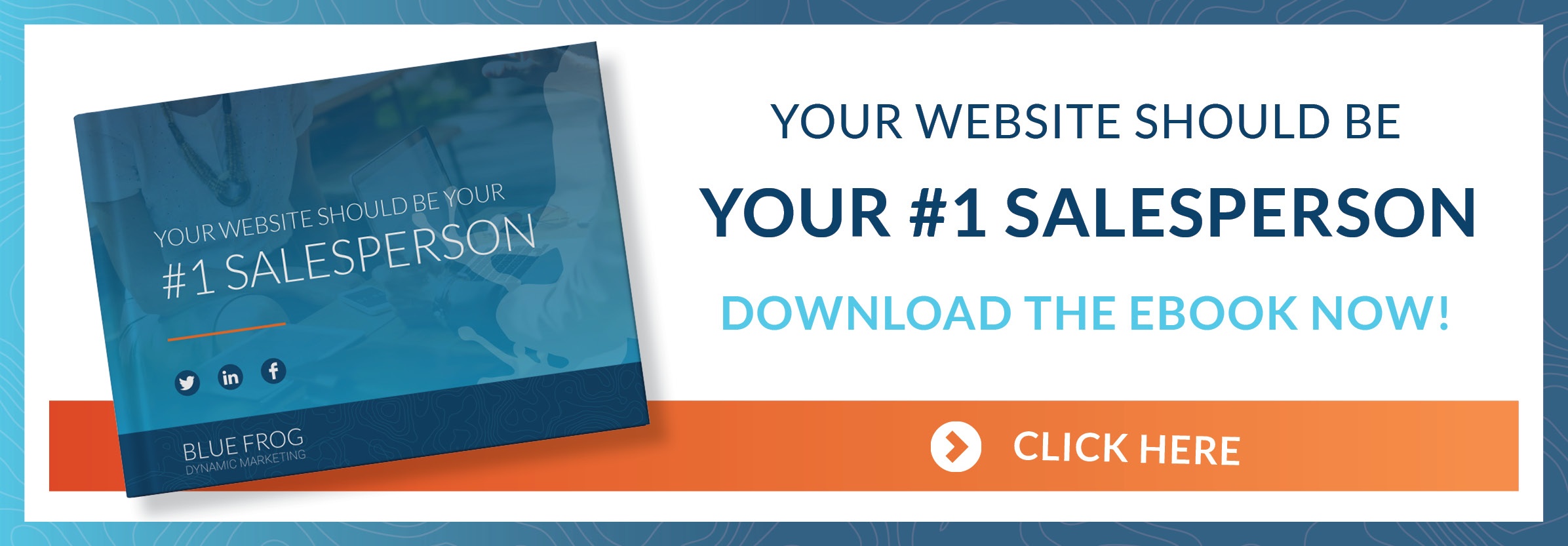
Effective web design is crucial for successful online marketing. While it’s easy to get hung up in aesthetic elements like colors, images and fonts, it’s important to look at the bigger picture of web design. A successful website really comes down to user experience. A site that is designed for a positive user experience keeps people engaged and prompts them to contact you, turning your visitors into leads for your business. Read on to learn the most important design factors for a website that converts!
How to Design a Successful Website
1. Use Clear Navigation
To ensure visitors can find what they’re looking for easily, you must have intuitive navigation. You want to avoid making a visitor take time to think about where they should click next; so, design clear paths for visitors to take.
Navigation Tips
- Your main navigation should be simple and near the top of your page.
- Keep labels consistent on every page of your website.
- Place a search box near the top of the site so visitors can search for content by keywords.
- Do not provide too many navigation options on a page.
2. Keep It Consistent
Not only should your navigation be consistent, but the look and feel of the site should also be consistent. Consider your voice, color schemes, fonts, and images to craft a cohesive site. Not every page needs the exact same layout, but a general feeling of consistency provides a better user experience.
3. Keep It Simple
Most visitors aren’t coming to your website to evaluate its aesthetic design and creativity; they're visitng to your site to find the information they need. Look at your website from your visitors' perspective. Too many unnecessary design elements can be distracting or overwhelming, prompting visitors to leave to find information on a site that's easier to read.
4. Make It Compatible for All Devices
Today, people are accessing the internet all kinds of different ways, from desktops to smartphones, using a variety of browsers and operating systems. Therefore, you must make sure your site is accessible for all visitors.
For example, if your website is not optimized for mobile devices, and 56% of your visitors access your site from mobile devices, your site’s bounce rate and conversion rate will suffer greatly. If a mobile user can’t easily navigate a website, they will simply leave and find a better site!
5. Be Clear and Concise
A clean, simple, and consistent website will be worthless if the content is not straightforward and easily digestible. People arriving on your site need to immediately understand what you do, what products and services you provide, and why they should do business with you.
Too much content can be overwhelming for visitors, and people do not like to spend time reading paragraphs of content to figure out what your business is all about. Provide enough content to make it clear what you do and to provide appropriate kewords for search engines, but don’t lose visitors in a mess of text!
Blue Frog’s experienced team of web designers and digital marketers can help make your website a successful lead generating tool. Contact us today to talk to our team, or for more information on creating a successful website, download our free eBook by clicking below!
Blue Frog Marketing is based in Des Moines, Iowa, and provides comprehensive, cutting-edge online marketing as well as print and graphic design services for clients across the U.S. and beyond. Contact us for web design services today!



